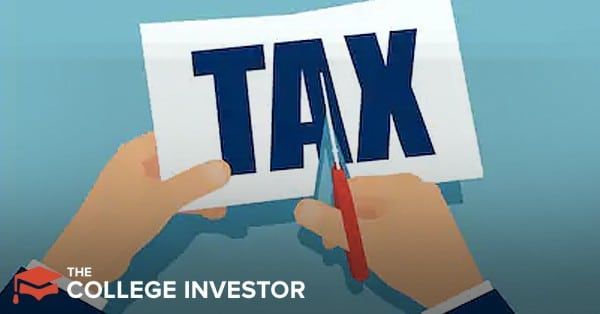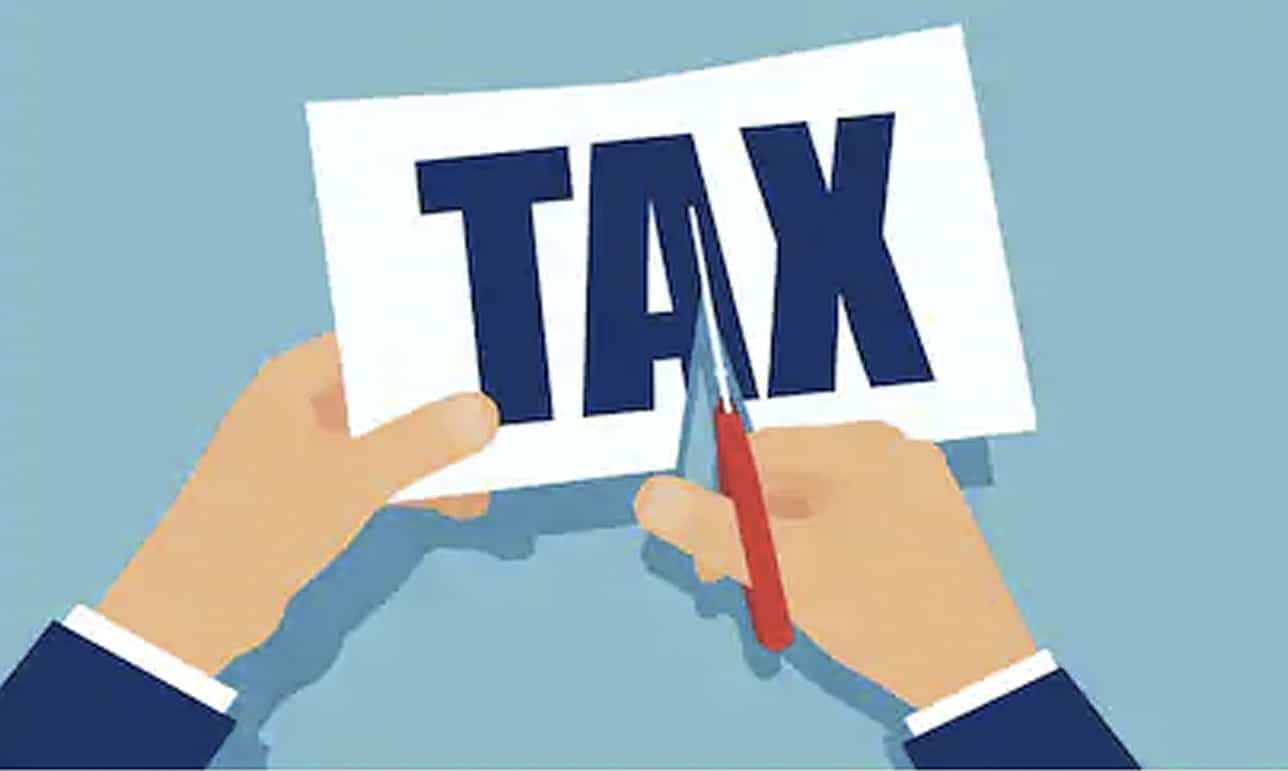
In the United States, all people adhere to a single tax code. Whether you have a high income or a low income, your taxation is governed by the same set of rules. But that doesn’t mean that all people pay the same tax rates.
In the absurdly byzantine rules of the tax code, different types of income are taxed differently. Plus, taking certain actions can help you legally avoid paying taxes. Ultimately, how you earn income, and what you do with your money once you earn it will dramatically influence how much you have to pay in income taxes.
Understanding how to arrange your finances to minimize your taxes can reward you with hundreds or even thousands of extra dollars to spend, invest, or give away as you see fit. Even if you’re not a high income earner (yet), knowing the tax code can be helpful. Your knowledge can help you grow your income in a tax-efficient way.
Want to learn more about minimizing your taxes? These six tax breaks are among the most accessible for everyday people. Plus, we’ll give you action steps to take so you can take advantage of them today.
1. The Saver’s Credit
The Saver’s Credit is a tax credit (which means dollar-for-dollar savings off your tax bill) for low income earners who meet the following criteria:
- At least 18 years old
- Not a full-time student
- Not a dependent on somebody else’s tax return
To earn this credit, you must put money into a workplace retirement plan, an IRA, or an ABLE account. You can get credit for up to $2,000 of retirement contributions ($4,000 if married filing jointly).
The table below shows how the credit works for different filing statuses and incomes for 2021:
Married Filing Jointly | Head of Household | Single | |
|---|---|---|---|
50% of Your Contribution | AGI at or below $39,500 Example: Each spouse contributes $2,000 to a workplace retirement plan for a combined $4,000 contribution. Total credit is 50% of $4,000 or $2,000. | AGI at or below $29,625 Example: Single person with dependent contributes $2,000 to a Roth IRA. Total credit is 50% of $2,000 or $1,000. | AGI at or below $19,750 Example: Single person contributes $2,000 to a 401(k). Total credit is 50% of $2,000 or $1,000. |
20% of Your Contribution | AGI from $39,501 to $43,000 Example: Each spouse contributes $2,000 to a workplace retirement plan for a combined $4,000 contribution. Total credit is 20% of $4,000 or $800. | AGI from $29,626 to $32,250 Example: Single person with dependent contributes $2,000 to a Roth IRA. Total credit is 20% of $2,000 or $400. | AGI from $19,751 to $21,500 Example: Single person contributes $2,000 to a 401(k). Total credit is 20% of $2,000 or $400. |
10% of Your Contribution | AGI from $43,001 to $66,000 | AGI from $32,251 to $49,500 | AGI from $21,501 to $33,000 |
When You’re Likely to Qualify
- Look for this credit the first year you graduate from college.
- If you take an extended maternity or paternity leave, you may qualify.
- The first year you start a business or start freelancing, you may show low income.
- Any time you return to the workforce after an extended period of unemployment.
- If you’re married and one spouse returns to school.
Why This Tax Break May Be Accessible to You
Investing for retirement is usually a great idea. Often, workplace retirement plans come with an employer match. Plus, the income requirement for this tax credit looks at your adjusted gross income. That means a single person who earns $38,250, but contributes $19,000 to a pre-tax 401(k), can qualify for the full $1,000 tax credit.
2. Capital Gains Exclusions on the Sale of a Primary Home
When you sell your primary residence, you get to keep the profits of the sale without paying capital gains or income tax on the profits. This exclusion applies on up to $250,000 of profit for an individual or $500,000 for a married couple filing jointly. As long as you’ve used the home as your primary residence for two of the past five years, you’ll qualify for the capital gains exclusion.
While most people who choose to own will enjoy a few tax-free home sales, this tax break can be a fantastic way to earn a living without paying taxes. If you buy a home that needs some TLC, fix it up and sell it for a profit — you’ll enjoy that profit free of taxes.
When You Are Likely to Qualify for the Capital Gains Exclusion
Fixing up a house is hard work (ask me how I know), but anyone who buys with the intention of improving the house may qualify. To figure out the math behind a live-in flip, I recommend this post from Chad Carson. Just be sure to have some DIY skills or a can-do attitude before embarking on a house flip.
Why This Tax Break May Be Accessible to You
Mortgage loan programs such as the FHA loan, a conventional loan, or a VA loan make it possible for everyday people to buy houses with just a few thousand dollars down. If you can put in sweat equity and skill, you may realize thousands or tens of thousands of dollars every two years by doing a live-in house flip.
It’s not easy, but it is a great way to make money without paying taxes.
3. Short-Term House Rentals
If you rent out your primary residence for 14 days or less each year, you don’t have to pay any taxes on the money you earn from renting out the house. If you live near a stadium that hosts major events once per year (such as Bristol Motor Speedway, the location of the Super Bowl, SXSW, etc.), consider renting out your primary house for a few days while you skip town.
The income from less than 14 days of rental may be enough to cover your mortgage payment for a few months.
When This Is Worthwhile
- If you can rent out your house for less than 14 days
- When your house is located near a major event
Why This Tax Break May Be Accessible to You
No matter where you live, it pays to know that you can rent out your house for 14 days without having to pay taxes. Even if you live in the middle of nowhere, you may be shocked to find that you’re in the path of totality for the next major solar eclipse or that your house is an ideal vacation spot for a group that wants to vacation off the beaten path.
Just remember, if you rent your house for 15 days or more, you have to pay taxes on income from all 15 days.
Check out this guide on the best places to list your house for rental.
4. Zero Percent Tax Rate on Long-Term Capital Gains and Qualified Dividends
The government actually sets up taxation to encourage long-term investing. The tax rate on investment income including long-term capital gains and qualified dividends is much lower than the tax rate on earned income. That means if you hold a stock, an ETF, or a mutual fund (or another investment) for more than a year, you may pay as little as 0% on the profits when you sell the stock.
You’ll also pay the “long-term capital gains” rate on all your qualified dividends. Below, you’ll see a chart that shows the tax rate you’ll pay based on your income.
Long-Term Capital Gains Rate | Filing Single | Married Filing Jointly | Head of Household | Married Filing Separately |
|---|---|---|---|---|
0% | $0 to $40,400 | $0 to $80,800 | $0 to $54,100 | $0 to $40,400 |
15% | $40,401 to $445,850 | $80,801 to $501,600 | $54,101 to $473,750 | $40,401 to $250,800 |
20% | Over $445,851 | Over $501,601 | Over $473,750 | Over $250,801 |
Check out the full breakdown of the capital gains tax brackets here >>
When You May Qualify for This Tax Break
- When you sell stocks, ETFs, or mutual funds during a sabbatical year, retirement, or other year when you don’t have much income
- When you sell stocks in a year when one spouse transitions out of the workforce
Why This Tax Break May Be Accessible to You
If you have a brokerage account or another investment vehicle that holds long-term investments, you should think about selling those investments in the most tax-effective way possible. In some cases, a bout with unemployment, a choice to take time away from work, or even retirement could be an ideal time to sell some of your stocks and take the profits tax-free. Just pay attention to the income thresholds so that you can maximize this tax break.
Consider working with an accountant before you sell a long-held investment.
5. Depreciation on an Investment Property
You may notice that a lot of these tax breaks come to people who invest their money. This tax break is another boon for people who invest in real estate. When you invest in real estate, you get to claim “depreciation” which is the decrease in value for things like houses, roofs, driveways, etc.
These are the things that go down in value over time, so it makes sense to depreciate the value. However, as a landlord, you also get to subtract maintenance expenses from your rental income. From a cash flow perspective, you basically only pay tax on a portion of the income you actually earned.
When You May Qualify for This Tax Break
Anyone who owns rental property or who rents out a portion of their house may qualify to claim depreciation on their property. The depreciation tax break makes rental real estate investing a much more profitable way to invest.
Why This Tax Break May Be Accessible to You
Buying your first rental property isn’t easy. However, a lot of people get into real estate investing via “house hacking” or taking on roommates. You may also get into rental real estate by converting a house you previously lived in into a rental property after a few years.
6. Skip Paying Taxes on the Last 20% of Your Qualified Business Income
Are you a business owner? Before you say no, consider whether any of your side hustles qualify as business. Are you a freelancer? Do you contract with Uber or Lyft?
In any of these circumstances, the income you earn from your side hustle may be considered qualified business income. Why does that matter? Because business owners no longer pay taxes on the last 20% of their business income (up to 20% of their entire claimed income).
So how does this work? Say that Tia earns $70,000 per year in her day job, plus she runs an Etsy printable business where she earns $20,000 in profit each year. Instead of paying taxes on the $70,000 of day job income, plus the $20,000 in Etsy income, Tia gets a 20% break on her Etsy income. That means she only pays tax on $16,000 of her Etsy income and the $70,000 from her day job.
When You May Qualify for This Tax Break
Becoming an entrepreneur or a freelancer isn’t for everyone. That said, earning money as a business owner rather than an employee is very tax-efficient right now. I commend owning a “side business” to anyone who has the time to spare.
Why This Tax Break May Be Accessible to You
Growing your income (while containing your expenses) is one of the clearest ways to grow wealth. If you have time, you can start a business and you can probably find a way to earn a profit. Whether your business is big or small, you can qualify for the qualified business income tax break.
Read this full guide to the 199A QBI tax break here.
Are You Ready to Save Money on Your Taxes?
When you’re first starting out in your career, you may not see the need to minimize your taxes. However, learning to use the tax code to your advantage can help you save a few dollars today and potentially thousands as your income grows.
These tax breaks aren’t about offshoring your money in the Cayman Islands. These are breaks that everyday people with everyday incomes could use to build wealth.

Hannah is a wife, mom, and described personal finance geek. She excels with spreadsheets (and puns)! She regularly explores in-depth financial topics and enjoys looking at the latest tools and trends with money.
Editor: Clint Proctor Reviewed by: Claire Tak
